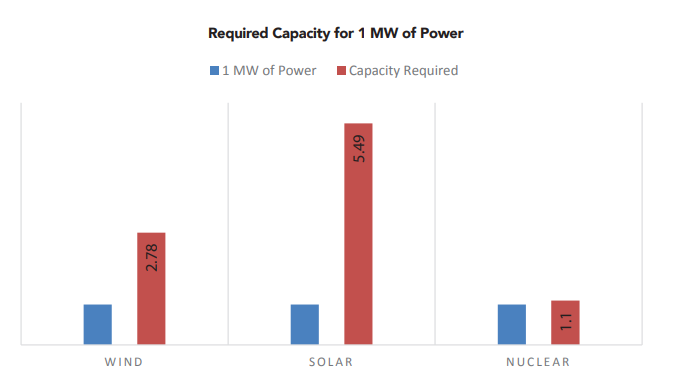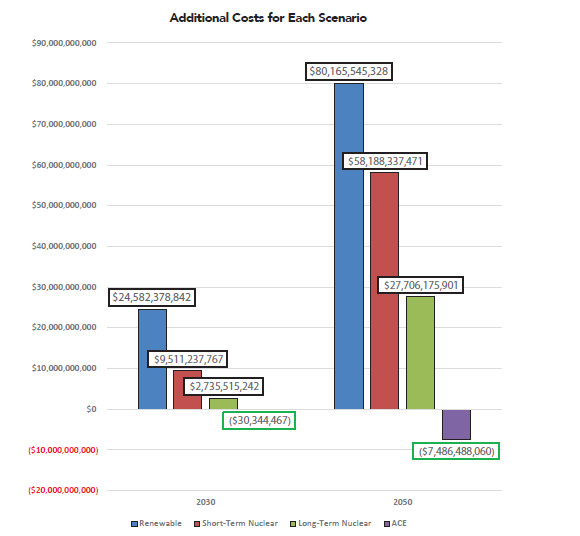Walz Administration Couldn’t Be More Wrong About Nuclear Power
This article originally appeared in the St. Cloud Times:
At a recent press conference, Gov. Tim Walz’s administration suggested the economics of nuclear power likely make it too expensive to be part of his plan to produce 100% of Minnesota’s electricity from carbon-free sources by 2050. Instead, the administration argued technological improvements would allow wind and solar to reliably and affordably meet Minnesota’s energy needs.
Unfortunately, the Walz administration couldn’t be more wrong on either account.
The reasons nuclear power will more reliably and more affordably allow Minnesota to reduce carbon dioxide emissions are twofold.
One, nuclear power plants provide dispatchable electricity — electricity on demand, whereas wind and solar are intermittent, only providing electricity when the elements, wind and sunlight, cooperate. As a result, using wind and solar means Minnesota must maintain, and pay for, two electric grids, one to provide electricity during the times when the weather cooperates and one to provide electricity when it does not.
The second reason is longevity. According to the National Renewable Energy Laboratory, wind turbines last just 20 years, and solar panels for 30 years. In contrast, nuclear power plants are initially licensed to operate for 40 years, and there are six nuclear facilities in the United States seeking to extend their operating lifetime to 80 years.
The longevity, or lack thereof, of these facilities, coupled with the intermittency of wind and solar have massive and important implications on cost.
Let’s compare the cost of building enough generation capacity to generate one megawatt (MW) of electricity from wind, solar and nuclear power. The U.S. Energy Information Administration assumes the cost of building one MW of wind costs $1.6 million, the cost of one MW of solar is $1.9 million and the cost of one MW of nuclear is $6 million.
However, the intermittency of wind and solar mean these facilities will not generate anywhere near their potential capacity of 1 MW. Data from EIA show Minnesota wind, solar and nuclear facilities generated about 35.9%, 18.2% and 96% of their generation potential, respectively. Therefore, it is necessary to build 2.8 MW of wind (1/.359), 5.5 MW of solar and 1.04 MW of nuclear to get 1 MW of electricity.

This brings the cost of building the necessary capacity to generate 1MW of electricity for wind, solar and nuclear to $4.5 million, $10.5 million and $6.25 million, respectively.
When the shorter operating lifespans for wind and solar are accounted for, however, the total cost of rebuilding wind turbines every 20 years brings the cost to $13.5 million per MW, and replacing solar on 30-year timescales results in a total cost of $21 million to generate electricity for 60 years.
Nuclear power is clearly the superior value. This is why Center of the American Experiment’s recent study found using nuclear power, rather than renewables, would save Minnesota $22-$52.5 billion, and achieve the same reduction in carbon dioxide emissions.

Walz often claims climate change an existential crisis. It is hard to take him seriously because the legislation he supports does nothing to lift Minnesota’s ban on building new nuclear power plants or allow large hydroelectric plants to count toward his definition of “carbon free.”
If Walz truly believes climate change is an existential threat, how can he possibly support legislation that keeps the two most reliable and cost-effective means of reducing carbon dioxide emissions, nuclear and large hydro, illegal?
Isaac Orr is a policy fellow at Center of the American Experiment.